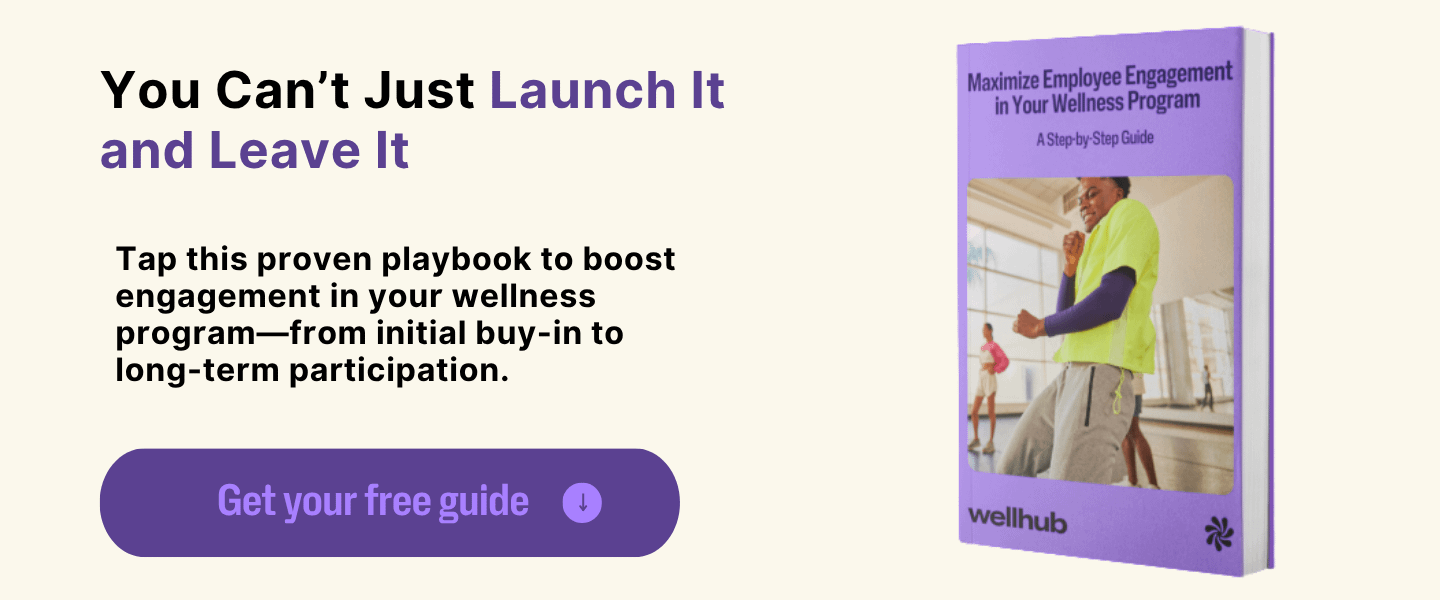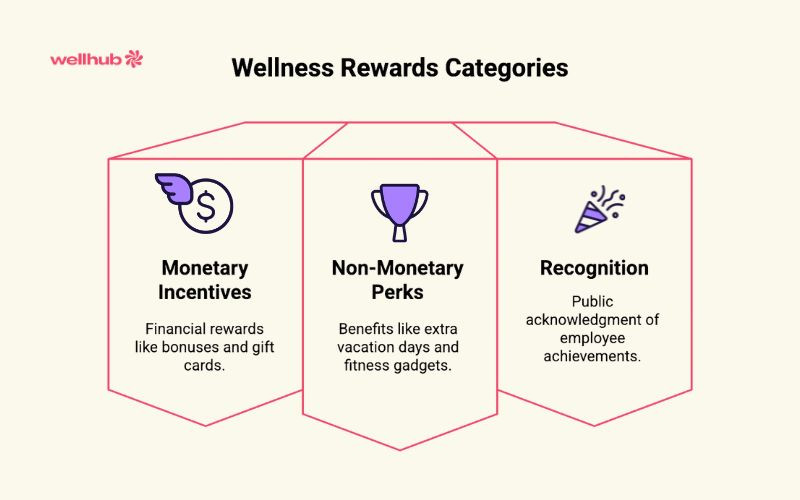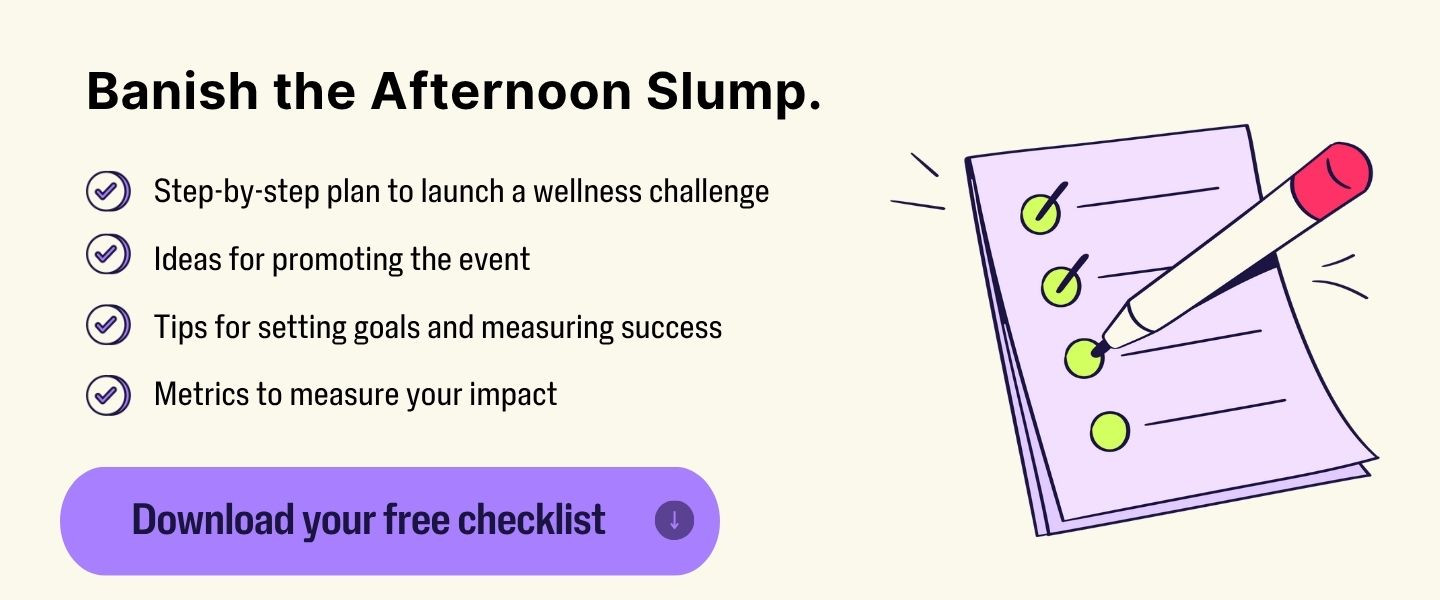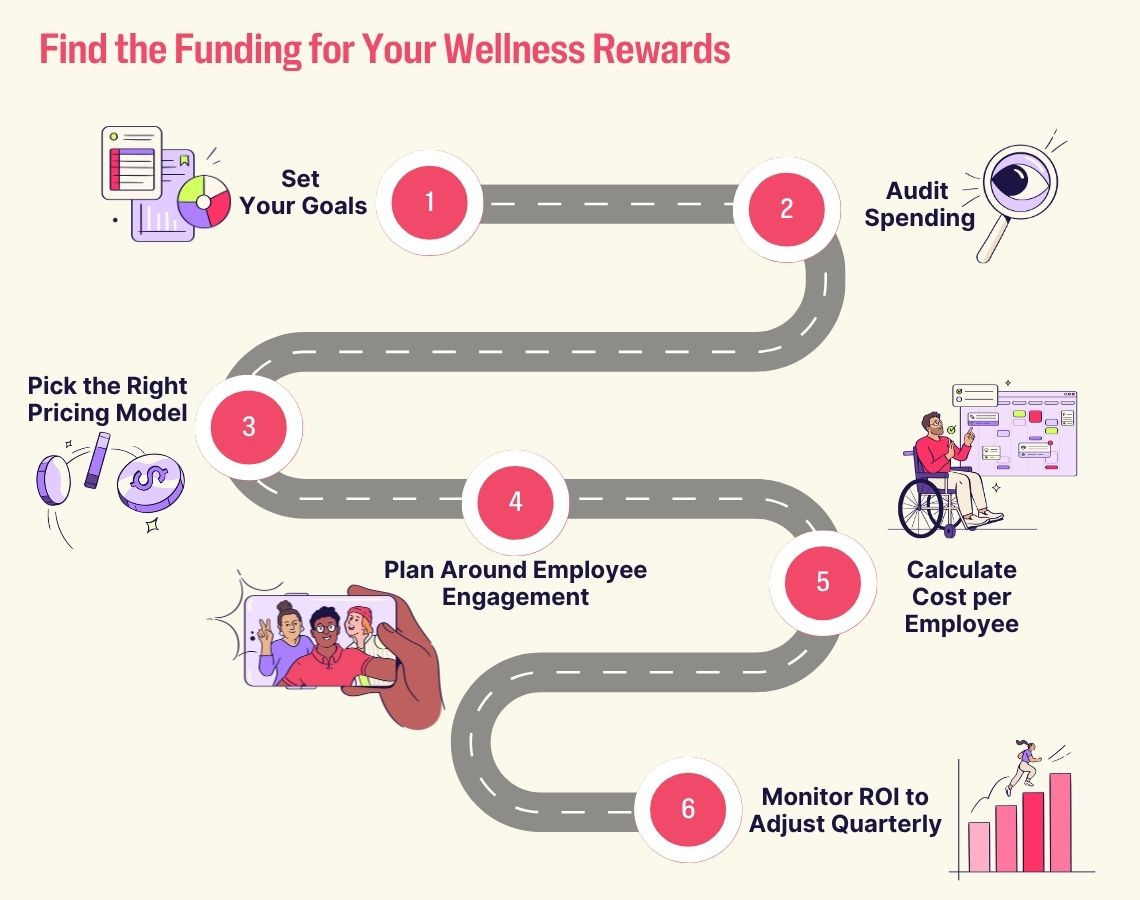How HR Leaders Can Leverage Wellness Rewards
Last Updated Nov 13, 2025

Key Takeaways
- Wellness rewards give organizations a clear way to inspire healthier habits through meaningful incentives. These rewards strengthen morale and encourage steady engagement by offering employees benefits that feel relevant to their daily lives.
- Different wellness program models offer distinct paths for motivating participation through outcomes, activities, or points. Each model supports unique workplace cultures and lets leaders shape wellness experiences that reflect how their teams like to stay engaged.
- Regulatory awareness ensures wellness programs stay inclusive, ethical, and protective of employee privacy. Clear alignment with HIPAA, ADA, GINA, EEOC guidance, and state rules creates a dependable foundation for every initiative.
- Effective wellness rewards create value for both employers and employees by promoting health, stability, and connection. These programs nurture satisfaction, support community building, and help organizations develop teams with strong energy and focus.
- Smart budgeting and clear goals help HR leaders design wellness rewards that scale with real needs and measurable outcomes. Thoughtful planning around pricing models, engagement drivers, and ongoing ROI tracking keeps programs sustainable and impactful.
Did you know the global corporate wellness market is set to hit an astonishing $146 billion by 2033?
This is more than a number—it’s a sign that businesses everywhere are recognizing the transformative power of employee wellness.
But here’s the real question: How can your organization tap into this potential to boost morale, productivity, and engagement?
Wellness rewards might just be the game-changer you need. From cash incentives to fitness challenges, these programs go beyond surface-level perks. They create lasting impact by prioritizing employee wellbeing and fostering a workplace culture that thrives. Whether it’s offering extra vacation days or celebrating small wins with public kudos, wellness rewards make your team feel valued and motivated.
Ready to unlock the potential of wellness rewards? Explore innovative program types, compliance essentials, and actionable strategies to build a program that’s as unique as your team. It’s time to turn good intentions into real results and elevate your workplace to new heights.

What Are Wellness Rewards?
Wellness rewards are incentives or benefits offered by organizations to encourage to participate in wellness programs or adopt healthier habits that benefit their wellbeing — you can think of them as little high-fives from your company.
What does that look like? They generally fall into one of these three categories:
- Monetary Incentives: Cash bonuses, lifestyle spending accounts, health insurance premium discounts, gift cards, or lower health insurance premiums—because who wouldn’t love a little extra financial boost.
- Non-Monetary Perks: Extra vacation days, wellness gadgets like fitness trackers, or free access to gyms and yoga studios. Wellness has never been so fun!
- Shoutout-Worthy Recognition: Celebrate employee achievements with public kudos that make them feel like the rockstars they are.
The best part? Wellness rewards don’t just help employees feel their best — they spark a culture of health and positivity that radiates throughout your organization. Healthier habits mean lower healthcare costs, higher morale, and a productivity powerhouse. It’s a win-win that keeps everyone thriving.

Types of Wellness Rewards Programs
There's no one-size-fits-all for workplace wellness programs. Every office has its own unique culture, so the incentives that drive one won't necessarily work on another.
Team leaders and human resources officers interested in developing a wellness program can only do so with an eye toward their office's particular characteristics. A thorough understanding of the options you have on the table for implementing employee wellness rewards programs can help make the best decision for your workplace.
Outcome-based Programs
Outcome-based wellness programs celebrate one thing: results. Picture this — your team rallies behind a shared goal, like hitting a weekly productivity milestone or surpassing a collective step count challenge. If they succeed? They earn a well-deserved reward, such as bonus pay, extra time off, or a coveted office perk.
These programs can spark fierce motivation, especially with competitive teams. They thrive on measurable achievements, so everyone knows who's excelling and how close they are to reaching the goal. The clarity and competitive spirit baked into outcome-based programs makes them incredibly effective at driving participation and boosting results.
Activity-based Programs
Activity-based programs are all about getting your team moving — literally and figuratively. By offering activities like lunchtime walks, fitness workshops, or mindfulness sessions, you’re giving employees a menu of wellness options that cater to diverse interests. The goal? To inspire participation in ways that feel natural and enjoyable for each person.
Success here hinges on knowing your employees. Not everyone’s a yoga enthusiast, and that’s okay! What’s important is finding the activities that resonate with your team and delivering them in a way that sparks engagement. A tailored approach makes all the difference — because when employees see options that truly excite them, they’re more likely to jump in.
Points-based Programs
Points-based programs dish out points like a currency to motivate your employees to act. You deal them out for anything you want to prioritize, whether attending a health seminar, getting a biometric screening, or joining a workout class. These points can then be redeemed for rewards, giving participants the freedom to choose what motivates them most.
And the superpower of points-based systems is their versatility. They’re easy to track with today’s wellness apps and adaptable to various employee interests. The catch? Managing these programs requires just a bit of finesse. To keep things running smoothly, streamline your approach by using clear guidelines and technology that simplifies tracking and feedback.
Whether you lean into outcome-based, activity-based, or points-based strategies — or even blend them together — the key is to design programs that align with your workforce's unique needs and culture. When employees feel seen, supported, and rewarded, wellness initiatives stop being a checkbox and start becoming a cornerstone of workplace satisfaction and productivity.

Relevant Regulations
As you design and implement your wellness rewards program, it’s essential to keep regulatory guidelines top of mind. These rules not only safeguard against discrimination but also protect your employees’ privacy and your organization from potential legal risks. Here's what you need to know:
- HIPAA (Health Insurance Portability and Accountability Act): HIPAA ensures that employees are protected from discrimination related to their health status and guarantees the confidentiality of their health information. For your wellness program, this means any health data you collect must be securely handled and stored.
- ADA (Americans with Disabilities Act): The ADA guarantees that employees with disabilities can fully access and participate in your wellness initiatives. To meet these requirements, design an inclusive program that offers equal opportunities for all employees, regardless of their abilities.
- GINA (Genetic Information Nondiscrimination Act): GINA prevents discrimination based on an employee's genetic information. Similar to HIPAA, it’s crucial to keep any genetic data collected as part of your program strictly confidential and use it only as intended.
- EEOC (Equal Employment Opportunity Commission) Guidelines: These guidelines emphasize creating programs that are fair and accessible to all employees, regardless of age, race, gender, or other characteristics. By adhering to EEOC standards, you can ensure your wellness program is equitable and inclusive.
- State Laws: Don’t forget to review and comply with any additional state-specific regulations that apply to wellness rewards programs. These can vary and might include further employee protections.
By aligning your wellness rewards program with these regulations, you’re not just protecting your organization — you’re creating a safe, inclusive space where every employee can thrive.
Benefits of Wellness Rewards Programs
To improve company culture and elevate the entire workplace, your wellness rewards need to deliver value across the board — for both employers and employees.
The good news? When done right, wellness rewards offer a win-win scenario for everyone involved.
For Employers
Reducing healthcare costs is a headline perk of wellness rewards, but that’s just the beginning. Research suggests that the right wellness rewards can lead to a variety of positive outcomes for your workplace, such as:
- A Healthier Workforce: Healthier employees mean fewer sick days and improved productivity, creating a more resilient and effective team.
- Stronger Employee Retention: When employees feel their wellbeing is valued, job satisfaction increases. This can reduce turnover and save on the costs associated with hiring and training new talent.
- Attracting Top Talent: Wellness rewards can lead to a superior workplace culture, helping you stand out to diverse, skilled candidates who value companies that prioritize wellbeing.
For Employees
A workplace culture that prioritizes wellbeing can be a game-changer for employees. When management places a renewed focus on health and wellness, the benefits go far beyond personal health. Employees thrive personally and professionally, bringing new energy and focus to their work.
Here’s how tailored rewards can help your wellness programs create a lasting impact:
- A more developed sense of community. Wellness rewards can bring employees together in meaningful ways, fostering connections and strengthening teamwork. Whether it’s a lunchtime walking group or a team-based challenge, these initiatives encourage collaboration and mutual support.
- Greater engagement in the workplace. Employees who feel supported in their own wellness goals are more likely to stay engaged with their tasks and their teams. Meaningful wellness rewards can enhance relationships between co-workers while also improving focus and productivity.
- An outlet for stress. Life can be stressful, but you can leverage wellness rewards to provide a healthy way for employees to recharge. Activities like yoga, mindfulness sessions, or fitness classes offer an opportunity to let off steam and return to work refreshed and ready to tackle new challenges.
Corporate Wellness Pricing Models, Explained
When evaluating a wellness rewards vendor, choosing the right pricing model is just as important as choosing the right perks. The model you pick will shape everything from how your program scales to how your finance team feels about it.
Let’s break down three of the most common pricing structures you’re likely to see — and when each one might be the right fit for your organization:
Reseller model
What it is: The reseller model gives your company full control. You negotiate discounted rates with wellness partners and handle distribution internally — often through a third-party platform. This setup works well when you already have a team (or a few highly engaged people) ready to manage and promote wellness initiatives.
Why it works: You get flexibility and brand control, and you can negotiate directly with providers.
Best for: Large enterprises with internal wellness champions
Keep in mind: You’ll need internal resources to manage contracts, communications, and employee engagement. It’s a DIY-friendly model — but only if you’ve got the team to pull it off.
Bundled model
What it is: Think of this as your set-menu option. The bundled model offers fixed-rate packages that include a mix of wellness services (like fitness classes, nutrition support, or mental wellbeing tools) for a flat per-employee rate.
Why it works: You’ll always know what to expect when budgeting. That’s a big win for finance and procurement teams who want cost clarity.
Best for: Mid-sized companies focused on predictable planning
Keep in mind: While predictable, bundles can be less personalized. Make sure the included benefits reflect your employees’ actual needs.
Usage-based model
What it is: In this model, you only pay when employees use the benefits — whether it’s checking in to a gym, booking a mindfulness session, or attending a health workshop. It’s a performance-based structure that ties cost to engagement.
Why it works: You only pay for what’s being used. That means you’re aligning spend with impact — a dream for cost-conscious HR leaders.
Best for: Organizations prioritizing flexibility and ROI
Keep in mind: While potentially cost-saving, budgeting is less predictable. If usage spikes, so can costs.
No matter the model, employee engagement is the make-or-break factor. In fact, 52% of HR leaders say high participation is essential to program success, according to Wellhub’s Return on Wellbeing 2024 report. So before you commit to a contract, ask yourself: Which model will empower our employees to engage — and stick with it?
Let your goals guide your choice. Cost control, customization, flexibility — you don’t have to sacrifice one to get the others. You just have to pick a partner who’s willing to meet you where you are.
Designing an Effective Wellness Rewards Program (Step-by-Step)
Wellness rewards are not a one-size-fits-all solution—it’s personal, intentional, and built with your unique team in mind.
Ready to build a program that unlocks the magic of wellness in your office? Let’s dive into these nine actionable steps to create a program that inspires!
Step 1: Clarify Your Objectives
Before you start brainstorming, get crystal clear on your goals. Are you aiming to reduce healthcare costs, boost morale, or improve employee retention? With specific and measurable objectives guiding your efforts, your wellness rewards can hit all the right marks.
Step 2: Know Your Audience
The heart of your program lies in understanding your team’s needs. Use surveys or one-on-one conversations to uncover what they truly value. Do they crave mental and emotional wellbeing support, fitness challenges, or more flexible time off? Your team’s feedback is your North Star.
Step 3: Get Creative with Incentives (Within Budget!)
Now that you know what makes your team tick, tailor your rewards. From extra vacation days to restaurant gift cards or a flexible points system, design options that motivate without busting your budget.
💰 Budget Tip: Incentives like gym reimbursements or gift cards can boost participation — but costs scale quickly. Consider mixing high- and low-cost options and tracking ROI to stay on budget.
Step 4: Stay Compliant
Navigating the legal landscape is crucial. Review regulations like HIPAA, ADA, and GINA to ensure your program not only supports your employees but also protects your company. Compliance is a must-have, not a nice-to-have.
Step 5: Spread the Word
Roll out your program with flair! Choose communication channels that resonate with your team—think fun videos, compelling email campaigns, or vibrant posters in shared spaces. Make it impossible to ignore!
Step 6: Leverage Technology
Technology can be your biggest ally. Use apps to track participation, wearables for fitness challenges, or feedback platforms to gather insights. A tech-driven program is a well-oiled machine.
Step 7: Track Your Success
Decide on key performance indicators (KPIs) to measure impact. Participation rates, health improvements, and employee satisfaction are great starting points. Monitor these metrics to gauge ROI and refine as needed.
Step 8: Analyze and Share Insights
Don’t let valuable data gather dust. Regularly analyze program performance and share findings with stakeholders. Use this feedback to tweak and elevate your rewards strategy.
Step 9: Sidestep Pitfalls
Challenges will arise—but they’re just stepping stones to success. Low engagement? Adjust incentives. Legal uncertainties? Double-check compliance. Confused employees? Simplify your messaging. A little preparation goes a long way.
How HR Leaders Can Budget for Wellness Rewards
Wellness rewards work best when they’re aligned with your company’s goals, your people’s needs, and your financial reality. So let’s break budgeting down into clear, manageable steps.

- Set your program goals first
Before diving into numbers, clarify what you want to achieve. Do you want to reduce healthcare costs? Increase engagement? Boost retention? Your goals will guide the scope of your investment.
Example goals:
- Improve employee satisfaction scores by 10% over 12 months
- Decrease absenteeism by 15% year-over-year
- Boost participation in wellbeing programs from 40% to 70%
When your goals are specific and measurable, you can better define ROI — and justify budget allocation to stakeholders.
- Audit your current spending
Wellness rewards don’t have to be an entirely new expense. In many cases, they can replace or optimize existing costs.
Check for:
- Low-use perks (like underutilized gym subsidies or meditation apps)
- Inefficient incentives (are you paying for outcomes or just effort?)
- Duplicate programs (offering similar benefits across departments)
Redirecting funds from less effective perks to high-impact rewards can give you room to grow without expanding your budget.
- Choose a pricing model that matches your needs
This is where things get tactical. Here’s a quick refresher on the three most common pricing models:
Model | Best for | Budget advantage |
Reseller | Enterprises with internal program owners | Greater flexibility and potential cost savings via direct negotiations |
Bundled | Companies seeking predictability | Fixed cost per employee makes planning easy |
Usage-based | Teams valuing flexibility | Pay only for what’s used — aligns cost to engagement |
Pick the model that aligns with your cash flow and program structure. A usage-based model can be great for piloting programs, while bundles offer consistent costs for annual planning.
- Factor in employee engagement
Here’s the truth: if employees don’t use your wellness rewards, your ROI drops fast. Engagement is what turns a good program into a great investment. Consider allocating part of your budget toward:
- Internal marketing and program promotion
- Manager training to drive adoption
- Incentives to reward usage
These efforts can dramatically improve uptake, making every dollar count.
- Calculate your total cost per employee
A good benchmark is to calculate the total wellness investment per employee. This includes vendor fees, rewards or subsidies, and program management time.
Sample formula: (Total program cost + administrative costs) ÷ number of eligible employees = cost per employee
Tracking this helps you compare costs year over year — and ensures your program scales sustainably.
- Monitor ROI and adjust quarterly
Wellness rewards are an investment — and like any investment, they need to be tracked and optimized. HR leaders who monitor ROI see higher returns, and 95% of those tracking it report positive results.
Use metrics like:
- Program participation rates
- Retention or turnover changes
- Employee satisfaction survey results
- Healthcare claims and absenteeism trends
Adjust your budget each quarter based on what’s working.
One last note: If cost is your biggest concern, know this: 91% of companies say their wellness program reduces healthcare costs. That means wellness rewards aren’t a nice-to-have — they’re smart financial planning.
Energize Your Workplace with Wellness Rewards
Wellness rewards programs can transform your workplace by encouraging healthier habits and fostering a culture of positivity. They address common challenges like low morale, high healthcare costs, and disengagement by offering incentives employees genuinely value.
A comprehensive wellbeing program can take this to the next level. It tailors solutions to your workforce, such as gym memberships, mindfulness sessions, and personalized incentives. Organizations with effective wellness programs report productivity increases 99% of the time and up to 35% reductions in healthcare costs.
Speak with a Wellhub Wellbeing Specialist today to design a wellness program that empowers your employees and drives meaningful results!

Company healthcare costs drop by up to 35% with Wellhub*
See how we can help you reduce your healthcare spending.
You May Also Like:
- A Guide to Wellness Programs for Small Businesses
- Seven Ways to Promote Workplace Wellness
- 22 Employee Gift Ideas to Support Worker Wellness
References
- DOL. (n.d.). Americans with disabilities act. https://www.dol.gov/general/topic/disability/ada
- Centers for Disease Control and Prevention. (n.d.). Health Insurance Portability and accountability act of 1996 (HIPAA). https://www.cdc.gov/phlp/php/resources/health-insurance-portability-and-accountability-act-of-1996-hipaa.html
- Genetic information nondiscrimination act (GINA). DOL. (n.d.-b). https://www.dol.gov/agencies/ebsa/laws-and-regulations/laws/gina
- Gough, C. (2024, August 19). Global Corporate Wellness Market Size U.S. 2033. Statista. https://www.statista.com/statistics/253331/revenue-of-the-us-employee-wellness-market/
- Jones, D., Molitor, D., & Reif, J. (2019, November). What Do Workplace Wellness Programs Do? Evidence From the Illinois Workplace Wellness Study. The Quarterly Journal of Economics. https://pmc.ncbi.nlm.nih.gov/articles/PMC6756192/
- Marenus, M. W., Marzec, M., & Chen, W. (2022, September 28). Association of Workplace Culture of Health and Employee Emotional Wellbeing. International Journal of Environmental Research and Public Health. https://pmc.ncbi.nlm.nih.gov/articles/PMC9564377/
- Wellhub (2024, May 16). Return on Wellbeing 2024. https://wellhub.com/en-us/resources/research/return-on-wellbeing-2024/
Category
Share

The Wellhub Editorial Team empowers HR leaders to support worker wellbeing. Our original research, trend analyses, and helpful how-tos provide the tools they need to improve workforce wellness in today's fast-shifting professional landscape.
Subscribe
Our weekly newsletter is your source of education and inspiration to help you create a corporate wellness program that actually matters.
Subscribe
Our weekly newsletter is your source of education and inspiration to help you create a corporate wellness program that actually matters.
You May Also Like

Corporate Wellness Trends HR Must Know for 2026 | Wellhub
See the top 2026 wellness trends shaping performance, retention, and culture—plus how HR can build a unified, ROI-driven wellbeing strategy.

Wellness Points Programs: Boost Employee Health & Engagement | Wellhub
Turn your workplace wellness strategy around with a points program that rewards healthy behavior with perks, from extra time off to gift cards.

Employee Financial Wellness Programs: Ultimate HR Guide | Wellhub
Create an effective financial wellness program that supports your employees in their financial needs, boosting productivity and retention.